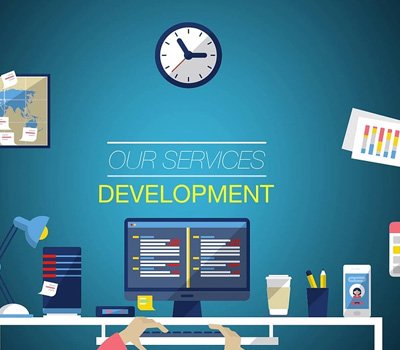
Unpacking the Fundamentals of the Sales Process
If you’re new to the sales or service industry, this guide serves as a gentle introduction to the primary steps involved in a typical sales process.
While seasoned professionals might adapt these steps to their unique selling style, novices are encouraged to closely adhere to them until a personalized approach emerges.
Every sales environment might have its minor alterations to the process, but on a general note, the stages remain the same.
The typical sales process is made up of the following steps: greeting, rapport building, needs determination, option presentation, objection handling, and closing.
The Welcoming Greeting:
Your first interaction with a customer can make or break their shopping experience. They want to feel valued and appreciated.
An enthusiastic, friendly greeting sets the tone for a positive interaction.
This might range from a simple “Hello, how are you doing today?” to a more personalized remark about their shopping so far.
Building Rapport:
Once the customer feels welcomed and begins to explore what you offer, take a moment to build a relationship.
If they’re examining a product, seize the opportunity to highlight its features or benefits.
Engage them in friendly, helpful conversation, asking open-ended questions about their needs or preferences.
Your goal is to gather enough information to lead you into the next steps, while also fostering a positive relationship with the customer.
Determining Needs:
Here, open-ended questions play a vital role in unveiling what the customer truly desires.
Listening attentively to their responses helps you ask more insightful questions, demonstrating your interest in their needs.
This process facilitates a quicker understanding of their requirements and strengthens the rapport built.
Presenting Options:
With a clear understanding of the customer’s needs, you can now present suitable options.
Whether you’re selling chocolates, clothing, or cars, product knowledge is critical.
As you discuss each choice, explain its features and benefits while observing the customer’s reactions to guide your presentation.
Remember, presenting options involves more than just talking about them; it means physically presenting the options to allow customers to interact with the products.
Overcoming Objections:
During the option presentation phase, customers may raise objections.
Understand that these objections might be based on incorrect assumptions, and it’s your job to clarify these misconceptions.
If the objection is straightforward, you can easily move on to another product. However, if it’s unclear, dig deeper to uncover the root of the concern, then address it.
If the objection can’t be surmounted, simply move on to other options.
Closing the Sale:
The closing phase is a recap of your interaction with the customer. This is where you confirm the customer’s choice, often referred to as a ‘trial closing.’
If the customer isn’t entirely decided, return to presenting options and overcoming objections, then attempt to close the sale again.
Other Considerations in the Sales Process:
Features and Benefits:
Understand the features (functionalities and characteristics) of your product and how these translate into benefits for the customer.
This way, you can communicate more effectively with customers who may not be familiar with industry-specific terms.
Product Knowledge:
Being perceived as an expert in your product enhances customers’ trust in you. Strive to learn everything about what you’re selling to offer expert advice.
Handling Multiple Customers:
During busy times, you may have to serve multiple customers simultaneously.
In such cases, efficient time management, politeness, and teamwork can help you manage the situation effectively.
Remember, your goal as a sales associate isn’t just to sell a product, but to foster a positive, helpful interaction that leaves the customer feeling valued.
This customer-centric approach will not only improve your success in individual sales but also contribute to long-term customer loyalty.
After-Sales Service and Customer Retention:
The sales process does not end when the customer leaves your store with a purchase. An important part of sales is the after-sales service and customer retention.
This includes reaching out to the customer post-purchase, to make sure they’re satisfied with their product or service.
If they have any issues, help resolve them promptly and professionally. Providing quality after-sales service can turn a one-time buyer into a repeat customer.
Remember, it’s far more expensive to acquire a new customer than to retain an existing one.
So, keeping in touch, providing updates, and being available for any after-sales queries or concerns can go a long way in maintaining a loyal customer base.
Role of Sales in the Company’s Success:
Sales are the lifeblood of any business. It’s through sales that companies generate revenue, and it’s this revenue that allows them to grow, innovate, and succeed.
Therefore, your role as a salesperson is crucial to your company’s success.
By mastering the sales process and consistently delivering exceptional customer service, you’re not only increasing your personal sales performance but also contributing significantly to the overall success and growth of your company.
The Use of Technology in the Sales Process:
With the advancement of technology, the sales process has evolved. Digital tools and technologies can help you streamline and enhance the sales process.
For instance, Customer Relationship Management (CRM) software can help you manage customer interactions, track leads, and analyze customer data.
E-commerce platforms and digital marketing channels enable you to reach a wider audience, while social media can be used for building relationships with customers and promoting your products.
It’s crucial to stay updated with the latest sales technologies and leverage them to optimize your sales process.
Regular Training and Learning:
Sales is a dynamic field, and to excel in it, you need to constantly update your skills and knowledge.
This includes not only learning about new products and services but also understanding changing market trends, customer preferences, and sales techniques.
Regular training, workshops, and learning sessions can help you stay ahead in your sales career.
In conclusion, the sales process is a systematic approach to selling that involves various stages, from greeting the customer to closing the sale.
By mastering these steps, asking the right questions, listening to the customers, and providing exceptional service, you can enhance your sales performance and contribute to your company’s success.
Always remember, your primary aim as a salesperson should be to solve the customer’s problem and provide value, not just make a sale.
By focusing on the customer’s needs and providing solutions, you’ll not only make a sale but also build a long-term relationship with the customer.

























































































